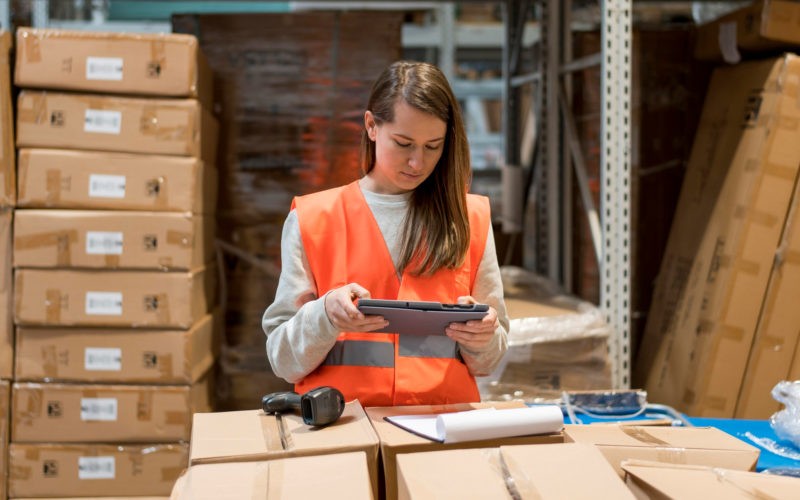Compliance standards surrounding packaging are being rewritten. Going forward, businesses must be more proactive to stay in line with these changes. Otherwise, they risk legal penalties, non-compliance fines and losing out to competitors who are able to meet demands.
Below, we’ll go over what’s driving these changes and how can businesses maintain compliance while still protecting the bottom line.
The Three Driving Forces that are Shaping Packaging Compliance
First and foremost, governments worldwide are enforcing eco-friendliness with stricter mandates. These mandates – while varied – are designed to reduce the excessive levels of carbon and plastic waste we see today. They are also meant to encourage circular economies, where materials are reused, recycled or repurposed instead of being discarded.
A great example of this is extended producer responsibility (EPR) laws. Many regions are implementing these regulations so that manufacturers are required to take accountability for the entire lifecycle of their packaging. This involves rethinking the materials being utilized, minimizing the amount of waste being generated, and modernizing packaging design to better align with sustainable packaging goals.
Another driver is consumer demand. More and more consumers consider sustainability when making purchases. That consideration goes beyond the products, as consumers take packaging, transport and ethical sourcing into account before making a purchasing decision. Today’s shoppers also want transparency and safety in packaging with clear labeling about materials used, potential allergens and compliance with food-grade safety standards. Failing to deliver this level of transparency can affect customer loyalty, as eco-conscious customers increasingly favor companies that prioritize responsible, sustainable manufacturing practices.
Last, but not least, supply chain resilience and efficiency are fueling changing standards as repercussions from recent global shipping disruptions are still being felt across the world. Through standardized labeling and barcodes to lightweight, modular packaging design, these new regulations aim to streamline supply chains and reduce waste along the way. As governments and industry bodies push for greater traceability, businesses must learn to balance cost-effectiveness with compliance by incorporating smarter packaging solutions that reduce material use and emissions while maintaining durability.
Ways You Can Keep Your Business Ahead of Changing Standards
Being proactive — versus reactive — doesn’t have to be complicated. Professionals across all industries have effective strategies at their disposal. Although these compliance strategies will likely vary by industry as well as location, they can go a long way in avoiding costly penalties and keeping the business competitive. Here are some forward-thinking approaches to consider:
Perform Compliance Audits Regularly
Staying up to date is key to maintaining compliance and the best way to do so is to conduct audits on a routine basis. By taking the time to identify areas within your packaging processes that need improvement and address them, businesses can make compliance simpler. These areas can vary from updating labeling practices to incorporating an eco-friendlier material.
Audits can also reveal inefficiencies that could be addressed through modern tools. For instance, implementing the latest automated tracking software can help save on time and resources by flagging potential issues before they have the chance to become costly mistakes.
Invest in Sustainable Packaging
Packaging design and the materials chosen can make a world of difference in the amount of waste being generated. Investing in modern, lightweight designs that use recyclable, compostable or reusable materials is essential to meeting the latest global regulations. Biodegradable and next-generation materials — such as compostable films, bio-based plastics and fiber-based alternatives — also have the power to extend shelf life. Overall, the goal is to cut down on your carbon footprint and overall waste while keeping cost efficiency front and center.
Outsourcing to sustainability-minded companies can be a game-changer. By putting your trust in others who strive to meet — if not go beyond — green initiatives, you can take the guesswork out of packaging compliance. Another option is to procure packaging that already meets the most recent standards. The option to buy small boxes in bulk is gaining traction as an increasing number of companies look to improve their brand image and attract eco-conscious consumers.

Make Packaging Strategies More Flexible
Along the same lines is implementing some extra wiggle room in your packaging processes. Often, rigid procedures can lead to delays, costly redesigns and even wastefulness in the supply chain. By opting for modular, scalable packaging designs, your business can avoid significant disruptions with each new mandate.
Flexibility can be achieved in numerous ways. It could be by shifting to modern printing methods or adopting interchangeable packaging components. No matter which new approach is chosen; the key is to future-proof your packaging operations so that they can be updated alongside regulations changes.
Switch to Smart Labeling and Tracking Technologies
To meet the growing demand for transparency, consider making the change to smart labels and sophisticated tracking tech. Whether you opt for QR codes, barcodes or RFID tags, this route can enhance consumer trust by offering detailed product info in a more accessible format. The right smart tracking technologies can also streamline inventory management, reducing the risks of mislabeling or contamination. This is essential in industries like food and pharmaceuticals, where product authenticity and safety are key.
Harness the Power of Life Cycle Assessments (LCA)
Last on our list of packaging sustainability and compliance strategies is integrating LCAs into your packaging designs. Designed to evaluate environmental impact, these assessments help measure the environmental impact of packaging materials from production to disposal, highlighting areas for improvement. This data can be a significant advantage as compliance frameworks move toward carbon footprint reporting. Using this tool allows your business to demonstrate sustainability efforts to regulators and consumers while maintaining long-term compliance and corporate responsibility.
Using Compliance to Your Advantage
Staying informed and adopting a sustainability-first outlook can keep your business ahead of the curve. Rather than see these changes as obstacles to be overcome, you can turn them into a competitive advantage with the power to boost your brand reputation and improve the efficiency of your operations, all while meeting the evolving expectations of consumers and regulators alike.
⸻ Author Bio ⸻
Jeff Brandt is a Certified Public Accountant (CPA) who oversees operations and accounting functions for Brandt Box & Paper Co., Inc., a trusted packaging company founded in 1952. Brandt has a Bachelor of Accountancy degree from The George Washington University and a Master of Science in Accounting from Indiana University. Representing the third generation of the Brandt family at Brandt Box, Brandt ensures that customers receive cost-efficient packaging solutions.












